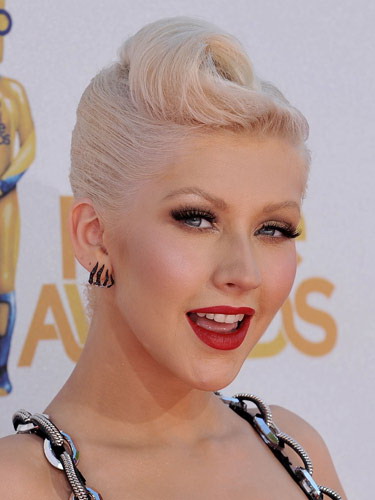The Enduring Fascination with White Blonde Pop Singers
From the golden age of Hollywood to today's top 40 charts, there's an undeniable allure surrounding white blonde pop singers. These artists, with their striking looks and powerful vocals, have captivated audiences for decades. But what is it about this specific archetype that continues to resonate with listeners and shape the landscape of popular music?
The image of the white blonde pop singer is deeply intertwined with notions of beauty, glamour, and success. This archetype often embodies a specific type of femininity – one that is traditionally attractive, youthful, and often associated with innocence or rebellion. Think Marilyn Monroe's breathy vocals and platinum blonde curls, or Debbie Harry's punk-rock edge juxtaposed with her icy blonde hair. These contrasting images highlight the versatility of the archetype, capable of embodying both vulnerability and strength.
Throughout history, numerous white blonde pop singers have left an indelible mark on the music industry. From pioneers like Madonna, who challenged societal norms with her provocative lyrics and bold style, to Britney Spears, who redefined pop stardom in the late '90s and early 2000s, these artists have continuously pushed boundaries and shaped the sound and image of popular music. Their influence extends beyond the music itself, impacting fashion trends, music videos, and inspiring countless aspiring artists.
However, the archetype of the white blonde pop singer isn't without its criticisms. Some argue that it promotes a narrow standard of beauty and contributes to the underrepresentation of artists from diverse backgrounds. The oversaturation of this image can overshadow the talent and artistry of musicians who don't fit the mold. It raises questions about the role of race and privilege within the music industry and sparks conversations about the need for greater inclusivity and representation.
The conversation surrounding white blonde pop singers is complex. While their impact on music history is undeniable, it's crucial to acknowledge the potential pitfalls of perpetuating a singular, homogenous image within such a diverse and influential industry. As music evolves, it's essential to celebrate artists of all backgrounds, pushing for a more inclusive and representative future of pop music.
The evolution of music relies on embracing diversity in all its forms. While the image of the white blonde pop singer remains a powerful cultural touchstone, it's vital to ensure that future generations of artists feel empowered to express themselves authentically, regardless of their race, appearance, or background. Breaking down barriers and celebrating individuality will pave the way for a richer and more dynamic musical landscape.
Advantages and Disadvantages of focusing on Archetypes in Music
| Advantages | Disadvantages |
|---|---|
| Easy Recognition and Marketing | Limits Creativity and Diversity |
| Establishes a Familiar Image for Fans | Can Perpetuate Harmful Stereotypes |
| Can Provide a Starting Point for Artists | Risks Overshadowing Individuality |
Common Questions About the Influence of White Blonde Pop Singers:
1. Is the prominence of white blonde pop singers simply a coincidence?
While individual talent plays a role, it's important to acknowledge the historical context and societal biases that have contributed to this phenomenon.
2. Does criticizing this archetype diminish the accomplishments of these artists?
Not necessarily. It's possible to appreciate an artist's talent while also critically examining the broader societal implications of their image and the systems that may have contributed to their success.
3. How can we promote greater diversity in pop music?
Supporting artists from diverse backgrounds, challenging industry norms, and advocating for more inclusive representation in media are crucial steps towards creating a more equitable music industry.
4. Is the image of the white blonde pop singer inherently problematic?
The issue lies in the overrepresentation and the limited scope of beauty standards it perpetuates. Celebrating diverse forms of beauty and talent is essential.
5. What impact does this archetype have on young people?
It's crucial to encourage critical thinking about media representation and promote positive self-image among young people, regardless of their appearance.
6. Can an artist challenge the archetype while still embodying some of its elements?
Absolutely. Many artists subvert expectations and redefine norms while still achieving mainstream success.
7. Is the dominance of this archetype declining?
While progress is being made, there's still work to be done to dismantle the systems that privilege certain images over others.
8. How can fans be more conscious consumers of music?
By actively seeking out and supporting artists from diverse backgrounds, fans can contribute to a more inclusive and representative music landscape.
The enduring influence of white blonde pop singers sparks important conversations about representation, beauty standards, and the evolution of the music industry. By acknowledging both the positive contributions and the potential pitfalls associated with this archetype, we can foster a more inclusive and dynamic future for music, one that celebrates the unique talents and perspectives of artists from all backgrounds.
Navigating the digital landscape the impact of emoji driven viral videos
Pennzoil 10w 30 high mileage keep your engine purring like a kitten
Exploring the impact of nancy fridays work














